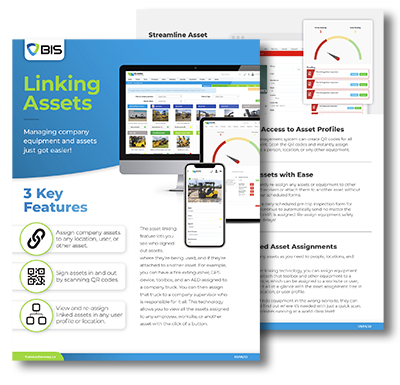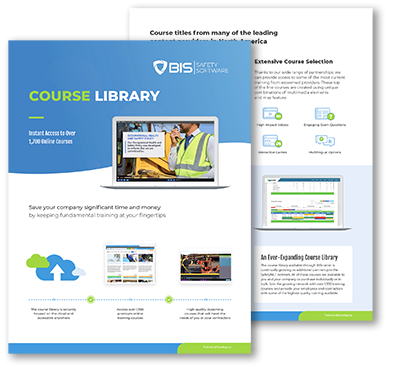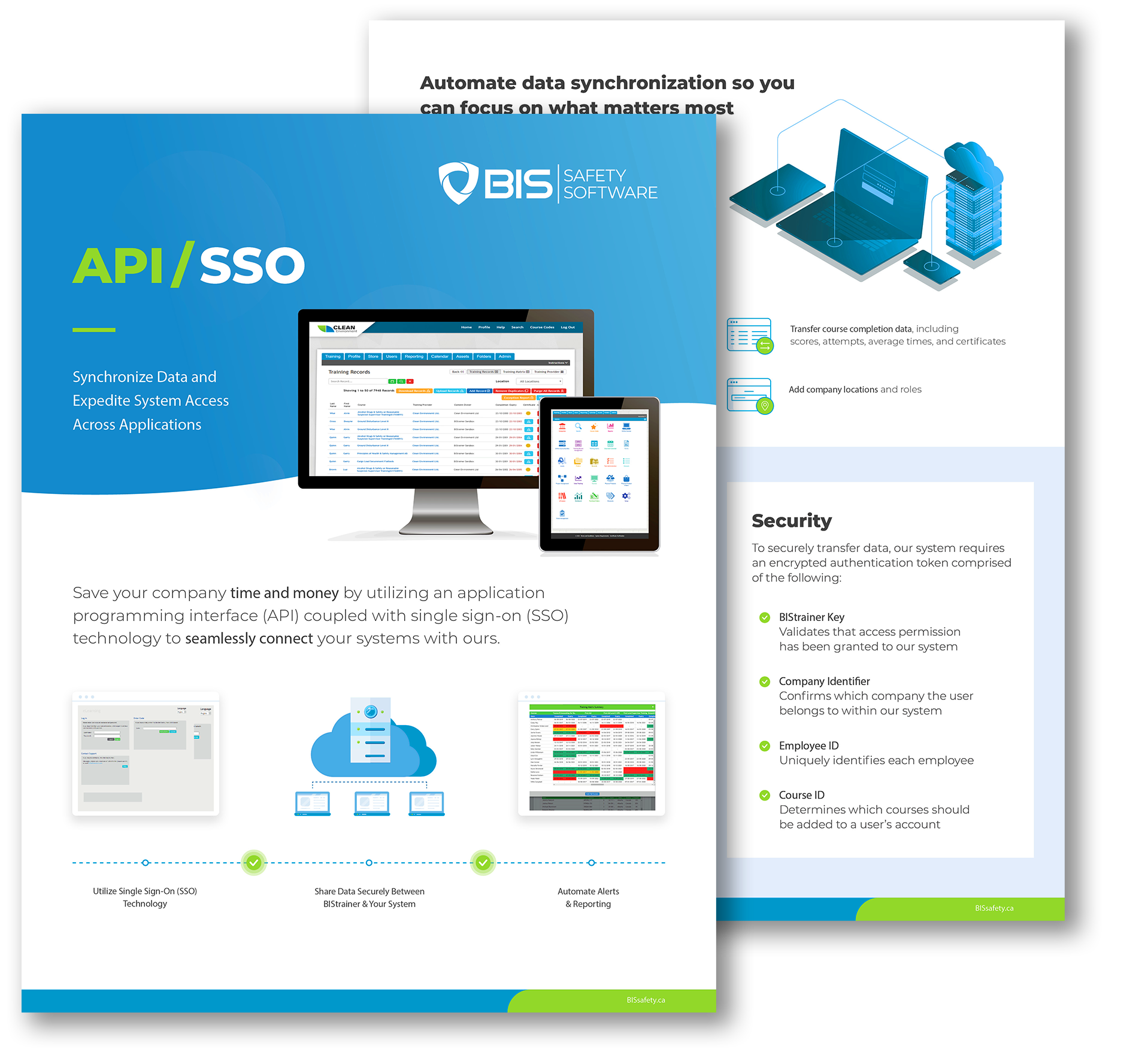Lorem ipsum dolor sit amet, consectetur adipiscing elit. Ut elit tellus, luctus nec ullamcorper mattis, pulvinar dapibus leo.

A pre-trip inspection is vital for the safety of drivers and all road users, as it checks the truck’s various components to ensure they are operational and defect-free, thus preventing potential accidents. This blog post offers guidance on creating pre-trip inspection forms that adhere to the standards of CCMTA, NSC, and CCOHS.
We will also discuss advanced strategies for simplifying these forms and the potential consequences of neglecting to complete pre-trip inspections in Canada.
-
Key Takeaways
-
- Creating a Pre-Trip Inspection Form That Adheres to CCMTA, NSC, and CCOHS Standards
- Creating a Pre-Trip Inspection Form That Adheres to CCMTA, NSC, and CCOHS Standards
- Streamline Your Truck Pre-Trip Inspection Form for Ease of Use
- Employ Software to Manage Your Pre-Trip Inspection Forms
- Consequences of Neglecting Pre-Trip Inspections
-
- BIS Social Media
- Frequently Asked Questions
- Related Articles
- Virtual Reality, Real Safety
- Safety Myths
- Would You Bet Your Paycheck on Safety?
Explore this Article:
What is a Pre-Trip Inspection Form?
Components Typically Included in a Pre-Trip Inspection Form:
- Engine and Transmission: Checks for leaks, proper fluid levels, and belt integrity.
- Brakes and Air Systems: Ensures brakes are functioning correctly and air pressure is stable.
- Wheels and Tires: Inspects for proper inflation, tread wear, and damage.
- Lights and Electrical Systems: Verifies that headlights, brake lights, turn signals, and other electrical systems are operational.
- Steering and Suspension: Assesses the condition of steering components and suspension stability.
- Cargo and Safety Equipment: Examines cargo securement and the availability of required safety equipment like fire extinguishers and warning triangles.
- Cab and Body: Looks for damage or issues with the cab structure, mirrors, windshield, and wipers.

Key Takeaways
- Lorem Ipsum is simply dummy text of the printing and typesetting industry. Lorem Ipsum has been the industry's standard dummy text ever since the 1500s, when an unknown printer took a galley of type and scrambled it to make a type specimen book. It has survived not only five centuries, but also
- Lorem Ipsum is simply dummy text of the printing and typesetting industry. Lorem Ipsum has been the industry's standard dummy text ever since the 1500s, when an unknown printer took a galley of type and scrambled it to make a type specimen book. It has survived not only five centuries, but also
- Lorem Ipsum is simply dummy text of the printing and typesetting industry. Lorem Ipsum has been the industry's standard dummy text ever since the 1500s, when an unknown printer took a galley of type and scrambled it to make a type specimen book. It has survived not only five centuries, but also
- Lorem Ipsum is simply dummy text of the printing and typesetting industry. Lorem Ipsum has been the industry's standard dummy text ever since the 1500s, when an unknown printer took a galley of type and scrambled it to make a type specimen book. It has survived not only five centuries, but also
Creating a Pre-Trip Inspection Form That Adheres to CCMTA, NSC, and CCOHS Standards
To ensure compliance throughout Canada, it’s crucial to incorporate standards from CCMTA, NSC, and CCOHS. Consider the following checks:
- Engine Compartment: Check oil levels, hoses, belts, the air filter, and for any leaks.
- Cab Inspection: Look for damage to the windshield, mirrors, lights, and windshield wipers. Ensure the horn, emergency brakes, and seat belts are functioning properly.
- Front End: Inspect the steering system, brakes, tires, and wheels.
- Trailer Inspection: Verify the condition of the trailer’s brakes, tires, wheels, and lighting.
- >Rear End: Check rear lights, brakes, tires, and wheels.
- Specialized Equipment: Include any specialized equipment like liftgates or refrigeration units.
- Documentation: Document any defects found and actions taken during the inspection.
Creating a Pre-Trip Inspection Form That Adheres to CCMTA, NSC, and CCOHS Standards
To ensure compliance throughout Canada, it’s crucial to incorporate standards from CCMTA, NSC, and CCOHS. Consider the following checks:
- Engine Compartment: Check oil levels, hoses, belts, the air filter, and for any leaks.
- Cab Inspection: Look for damage to the windshield, mirrors, lights, and windshield wipers. Ensure the horn, emergency brakes, and seat belts are functioning properly.
- Front End: Inspect the steering system, brakes, tires, and wheels.
- Trailer Inspection: Verify the condition of the trailer’s brakes, tires, wheels, and lighting.
- >Rear End: Check rear lights, brakes, tires, and wheels.
- Specialized Equipment: Include any specialized equipment like liftgates or refrigeration units.
- Documentation: Document any defects found and actions taken during the inspection.
While the specifics may vary by truck type and industry, the above components are commonly included in Canadian truck pre-trip inspection forms.
For detailed guidance, refer to the National Safety Code (NSC) Standard 13 pre-trip inspection form. This form complies with the requirements of the Canadian Council of Motor Transport Administrators (CCMTA) and NSC Standard 13.
The NSC Standard 13 form contains sections for both driver and vehicle inspections:
- Driver Section: Includes items like seat belts, mirrors, and brakes for the driver to inspect.
- Vehicle Section: Features a checklist for the driver to examine the truck’s tires, lights, and engine.
Designed for clarity and ease of use, the NSC Standard 13 form includes straightforward instructions, visual aids for thorough inspections, and spaces for noting any defects or issues found. It also provides guidelines for reporting these issues to fleet managers.
Using a compliant form like the NSC Standard 13 is crucial for maintaining safety standards and ensuring that all trucks are roadworthy before operation.
Related read: Do you own a business in the insurance industry? Check out how Artificial Intelligence is transforming the insurance industry.
Streamline Your Truck Pre-Trip Inspection Form for Ease of Use
Pre-trip inspections are critical for driver safety and roadway safety, yet they can be labor-intensive and time-consuming. Here are some strategies to simplify the pre-trip inspection process for truck drivers:
-
- Provide Clear, Concise Instructions: It’s important that drivers have straightforward and succinct guidelines on how to perform pre-trip inspections. These instructions should be easy to follow, outlining each step clearly and indicating how to record any discovered issues.
- Offer Training and Support: For drivers who are new to the process or unfamiliar with their truck’s specific components, providing training and support is crucial. This ensures that drivers are well-informed and comfortable with the inspection procedures, which can help decrease mistakes and enhance the accuracy of inspections.
- Enhance Visibility of the Inspection Checklist: Ensuring that the inspection checklist is easily accessible and visible within the truck’s cab is essential. This visibility helps remind drivers of the necessary checks and guarantees that no critical steps are overlooked.
- Foster Open Communication: It’s vital for drivers to feel at ease when reporting any problems they encounter during inspections. Fleet managers should promote open communication and facilitate easy reporting of any concerns or issues. This approach aids in quick resolution of potential problems and helps prevent minor issues from escalating.
- Implement Digital Forms: Adopting digital forms for pre-trip inspections can significantly streamline the process. These electronic forms can be customized to match the specific needs of your fleet and automatically guide drivers through each inspection point. Digital forms can also automatically update based on changes in compliance requirements, ensure that no items are overlooked by using mandatory fields, and simplify the documentation process by allowing drivers to enter information directly on a tablet or smartphone. This not only speeds up the inspection process but also improves data accuracy and makes it easier to track and analyze inspection data over time.

Employ Software to Manage Your Pre-Trip Inspection Forms
Consequences of Neglecting Pre-Trip Inspections
In Canada, penalties for skipping pre-trip inspections can vary by province and territory, typically ranging from $250 to $1,000 for a first violation, with potential increases for repeated offenses.
For instance, in Ontario, under the Highway Traffic Act, a commercial vehicle operator might face a $250 fine for neglecting to perform a pre-trip inspection or not conducting a mandated safety check. This fine escalates to $500 for a second violation within a year and $1,000 for any further offenses during the same period.
It’s crucial to remember that pre-trip inspections are not just a legal requirement but are also essential for the safety of the driver, the vehicle, and other road users. Regular and thorough inspections are imperative to avoid fines and ensure safety on the roads.
Frequently Asked Questions
Have question in mind? We are here to answer. If you don’t see your question here, drop us a line at our contact page.
Lorem Ipsum is simply dummy text of the printing and typesetting industry?
Lorem ipsum dolor sit amet, consectetur adipiscing elit. Ut elit tellus, luctus nec ullamcorper mattis, pulvinar dapibus leo.
Lorem Ipsum is simply dummy text of the printing and typesetting industry?
Lorem ipsum dolor sit amet, consectetur adipiscing elit. Ut elit tellus, luctus nec ullamcorper mattis, pulvinar dapibus leo.
Lorem Ipsum is simply dummy text of the printing and typesetting industry?
Lorem ipsum dolor sit amet, consectetur adipiscing elit. Ut elit tellus, luctus nec ullamcorper mattis, pulvinar dapibus leo.
Lorem Ipsum is simply dummy text of the printing and typesetting industry?
Lorem ipsum dolor sit amet, consectetur adipiscing elit. Ut elit tellus, luctus nec ullamcorper mattis, pulvinar dapibus leo.
Lorem Ipsum is simply dummy text of the printing and typesetting industry?
Lorem ipsum dolor sit amet, consectetur adipiscing elit. Ut elit tellus, luctus nec ullamcorper mattis, pulvinar dapibus leo.
Related Articles
- All Posts
- 360 Immersive
- Alberta safety courses
- awareness
- biometric sensors
- BIS Safety Software
- chemical
- community safety programs
- Compliance
- Construction advocacy
- Construction education
- Construction industry
- crane
- customized training
- data-driven safety
- digital forms
- driver training
- EHS
- employee safety
- ergonomics
- exoskeletons
- fall protection
- field safety services
- hands-on training
- hazard prevention
- incident data
- incident reporting
- industrial safety
- injury prevention
- Jennifer Lastra
- job site hazards
- Leadership
- lone workers
- mental health at work
- MI Safety
- Northern BC
- NRCA
- occupational health
- occupational safety
- overhead crane courses
- PPE
- pretrip inspection
- Professional development
- psychological safety
- risk management
- Robin Postnikoff
- safety
- safety advice
- safety article
- safety best practices
- safety compliance
- safety culture
- safety innovation
- safety insights
- safety leadership
- safety management
- safety management system
- safety myths
- safety tips
- safety training
- smart helmets
- Total Recordable Injury Formula
- training
- training courses
- training record management
- transportation
- Virtual Reality
- VR Technology
- wearable technology
- WHMIS
- women in leadership
- worker accountability
- workplace best practices
- workplace hazards
- Workplace safety
- workplace wellness

Home Carrie Parashar Jennifer Lastra’s Mission to Save Lives Lorem ipsum dolor sit amet, consectetur adipiscing elit. Ut elit tellus,...

Home Safety Myths That Need to Die Lorem ipsum dolor sit amet, consectetur adipiscing elit. Ut elit tellus, luctus nec...

Home Would You Bet Your Paycheck on Safety? That Need to Die Lorem ipsum dolor sit amet, consectetur adipiscing elit....


